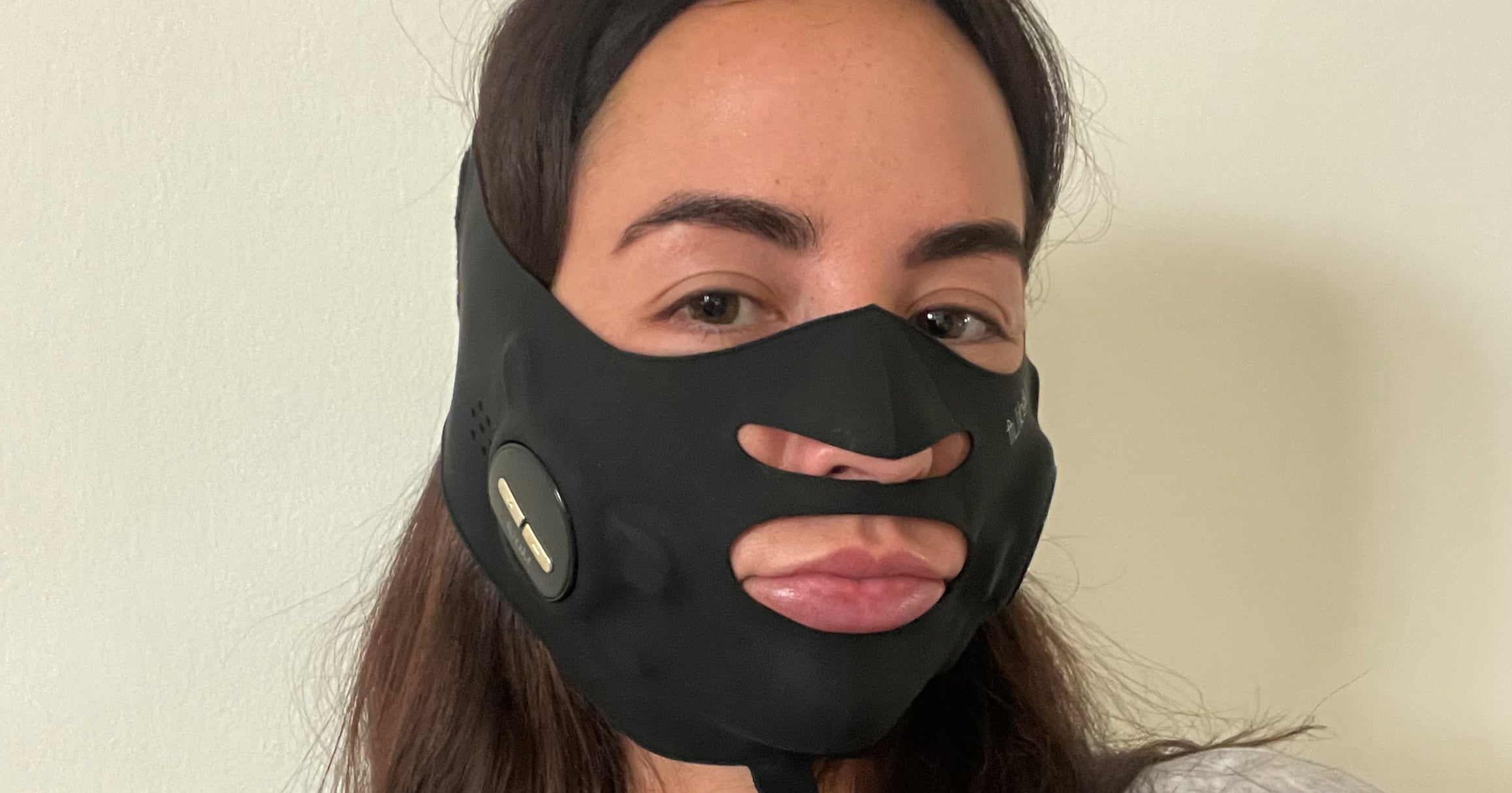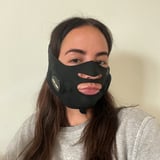Have you seen those weird workouts where people wear those ugly (sorry, not sorry) wetsuit-type outfits while exercising? Although I’ve seen them plenty of times on television and Instagram, I only recently learned that those suits use electrical muscle stimulation, more commonly known as EMS. They essentially allow your body to do something like four hours of exercise in a 30-minute window. (Ugly, but effective.) When I heard there was a facial version of an EMS workout, and all you had to do was put on a funny-looking mask that slightly resembled Bane from “The Dark Knight Rises,” I was pretty interested in learning more.
I’m all about a savvy skin-care routine with effective products – and I’ve tested microcurrent devices in the past with great results – but in all honesty, I wasn’t quite sure what EMS was, whether or not it worked, and if I was a good candidate to try it out. To learn more, I tapped two experts who helped answer all of my questions about the buzzy at-home treatment. Then, I tried out an EMS device for myself.
Keep scrolling to learn more about what EMS is as well as to read about my experience using an EMS product.
What Is EMS?
“Electrical muscle stimulation (EMS) involves using electrical impulses to stimulate muscle contractions, causing the muscles to undergo a certain degree of activity,” Evelyn Ramirez, a licensed aesthetician, tells PS. “This technology is often used in physical therapy, fitness training, and rehabilitation programs.”
There are quite a few benefits of regular EMS use, especially body or facial contouring. This includes “enhanced muscle strength and endurance, muscle building and toning, improved muscle recovery, increased blood circulation, and potential aid in muscle rehabilitation,” Ramirez says. However, Jimmy C. Sung, MD, medical director of Tribeca Aesthetics in New York City, adds that the benefits need to be combined with other healthy lifestyle choices, such as diet and exercise.
According to Dr. Sung, although EMS does have a high safety profile, there are some potential side effects. This includes potential skin irritation at the electrode sites, redness, or mild discomfort at the treatment site. In more rare cases, Ramirez says that some users can experience muscle spasms and cramps.
Additionally, anyone with a pacemaker, other electronic implanted devices, or those with epilepsy should avoid EMS. Those who are pregnant, have multiple sclerosis, cancer, or other known heart conditions should also avoid EMS.
EMS vs. Microcurrent
While there are plenty of well-known microcurrent devices on the market, it seems that EMS is a little more under-the-radar. “Microcurrent is usually used for skin-based nerve stimulation or very fast twitched movement, like flicks,” Dr. Sung says. “On the other hand, EMS/FMS (HIFEM) uses much more powerful energy to cause solid and sustained muscle contractions.” Both types of devices can be used in conjunction with one another, however, you should always consult with your doctor or a license physician before starting any new treatment plan.
My EMS Experience
To try EMS at home, I used the Medi Lift Essential Mask ($400). I had to start out by charging the left and right controllers, which are two small round pieces that are later attached to the mask. Charging time took about two hours total, and once that was complete, I pushed each piece into the recessed part on the back of the silicone mask. Once the mask was set up, the instructions said I needed to “generously” wet my face because EMS wouldn’t be delivered to my skin unless there was water in between the electrodes and my skin.
After my face was sufficiently damp, I secured the mask, placed the headband over the top of my head, and turned on each of the controllers. The mask I tested has five different intensity levels; I started at the first intensity level, but now I use level three. The experience felt similar to using a TENS machine, which I’ve done in the past for my TMJ. Essentially, I could feel my muscles twitching and jerking because of the mask, and even though it was a little uncomfortable at first, it wasn’t painful.
The device powers off after 10 minutes, which goes by fairly quickly. It was easy to use while I was working at my computer or watching TV because it’s completely hands-free. I’ve been using it once a day for about a month now, and I do think my jaw looks the tiniest bit more defined. It is a bit more involved than your typical LED mask, for instance, but it’s not any more complicated than a microcurrent device. I found that it was easy to use during my regular work day, so I’d recommend it to anyone who is serious about skin tightening and has the time to use a product consistently.
Renee Rodriguez is a staff writer and social producer for PS. She writes across all verticals, but her main areas of expertise focus on fashion and beauty content with an emphasis on reviews and editor experiments. She also produces social content for PS’s TikTok and Instagram accounts.




